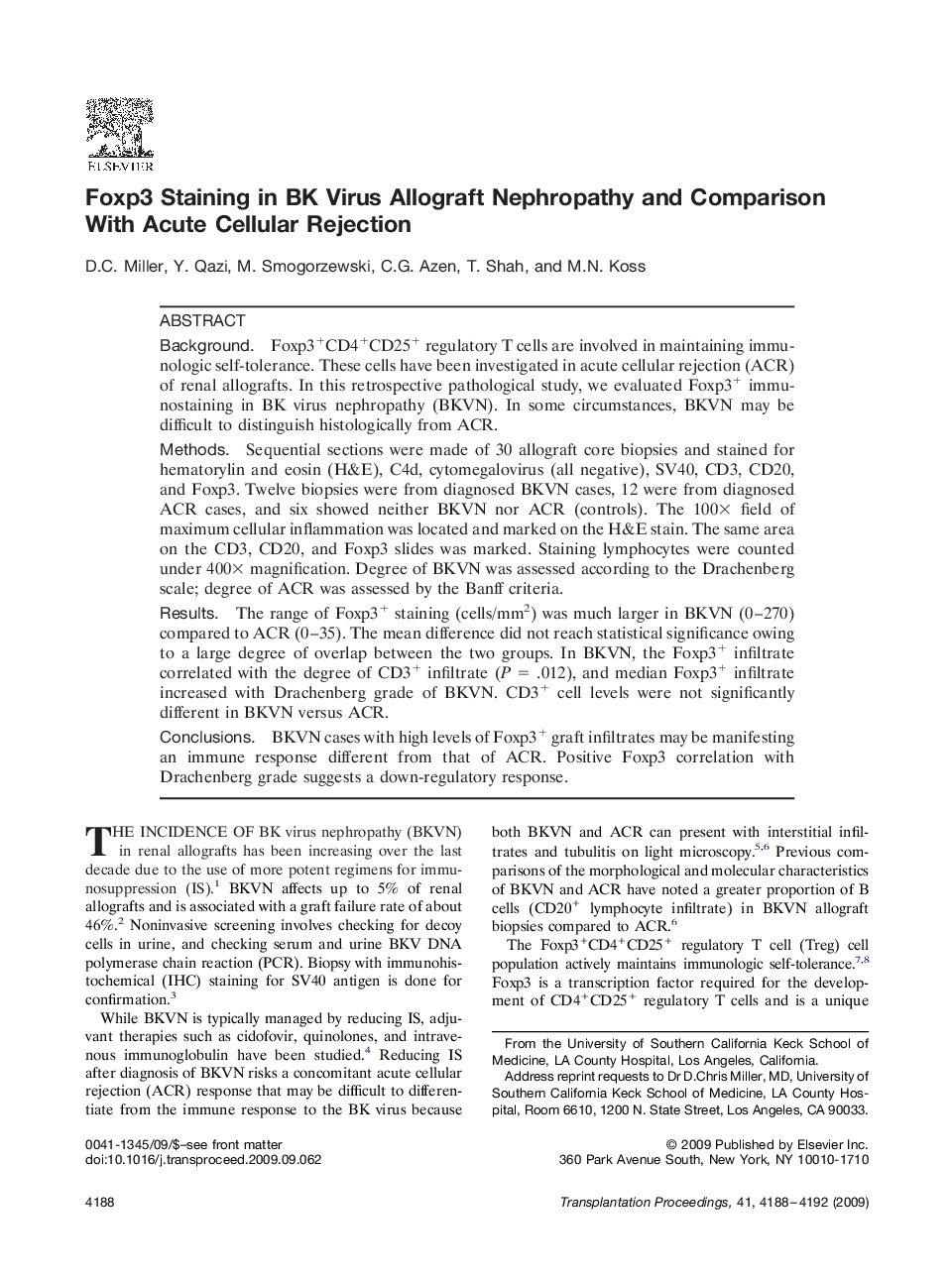| Article ID | Journal | Published Year | Pages | File Type |
|---|---|---|---|---|
| 4258486 | Transplantation Proceedings | 2009 | 5 Pages |
BackgroundFoxp3+CD4+CD25+ regulatory T cells are involved in maintaining immunologic self-tolerance. These cells have been investigated in acute cellular rejection (ACR) of renal allografts. In this retrospective pathological study, we evaluated Foxp3+ immunostaining in BK virus nephropathy (BKVN). In some circumstances, BKVN may be difficult to distinguish histologically from ACR.MethodsSequential sections were made of 30 allograft core biopsies and stained for hematorylin and eosin (H&E), C4d, cytomegalovirus (all negative), SV40, CD3, CD20, and Foxp3. Twelve biopsies were from diagnosed BKVN cases, 12 were from diagnosed ACR cases, and six showed neither BKVN nor ACR (controls). The 100× field of maximum cellular inflammation was located and marked on the H&E stain. The same area on the CD3, CD20, and Foxp3 slides was marked. Staining lymphocytes were counted under 400× magnification. Degree of BKVN was assessed according to the Drachenberg scale; degree of ACR was assessed by the Banff criteria.ResultsThe range of Foxp3+ staining (cells/mm2) was much larger in BKVN (0–270) compared to ACR (0–35). The mean difference did not reach statistical significance owing to a large degree of overlap between the two groups. In BKVN, the Foxp3+ infiltrate correlated with the degree of CD3+ infiltrate (P = .012), and median Foxp3+ infiltrate increased with Drachenberg grade of BKVN. CD3+ cell levels were not significantly different in BKVN versus ACR.ConclusionsBKVN cases with high levels of Foxp3+ graft infiltrates may be manifesting an immune response different from that of ACR. Positive Foxp3 correlation with Drachenberg grade suggests a down-regulatory response.
